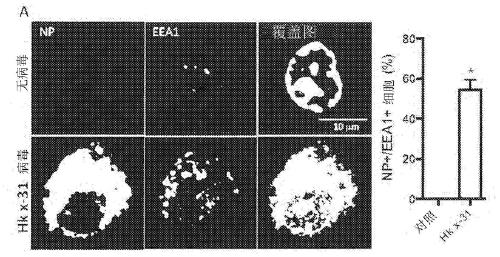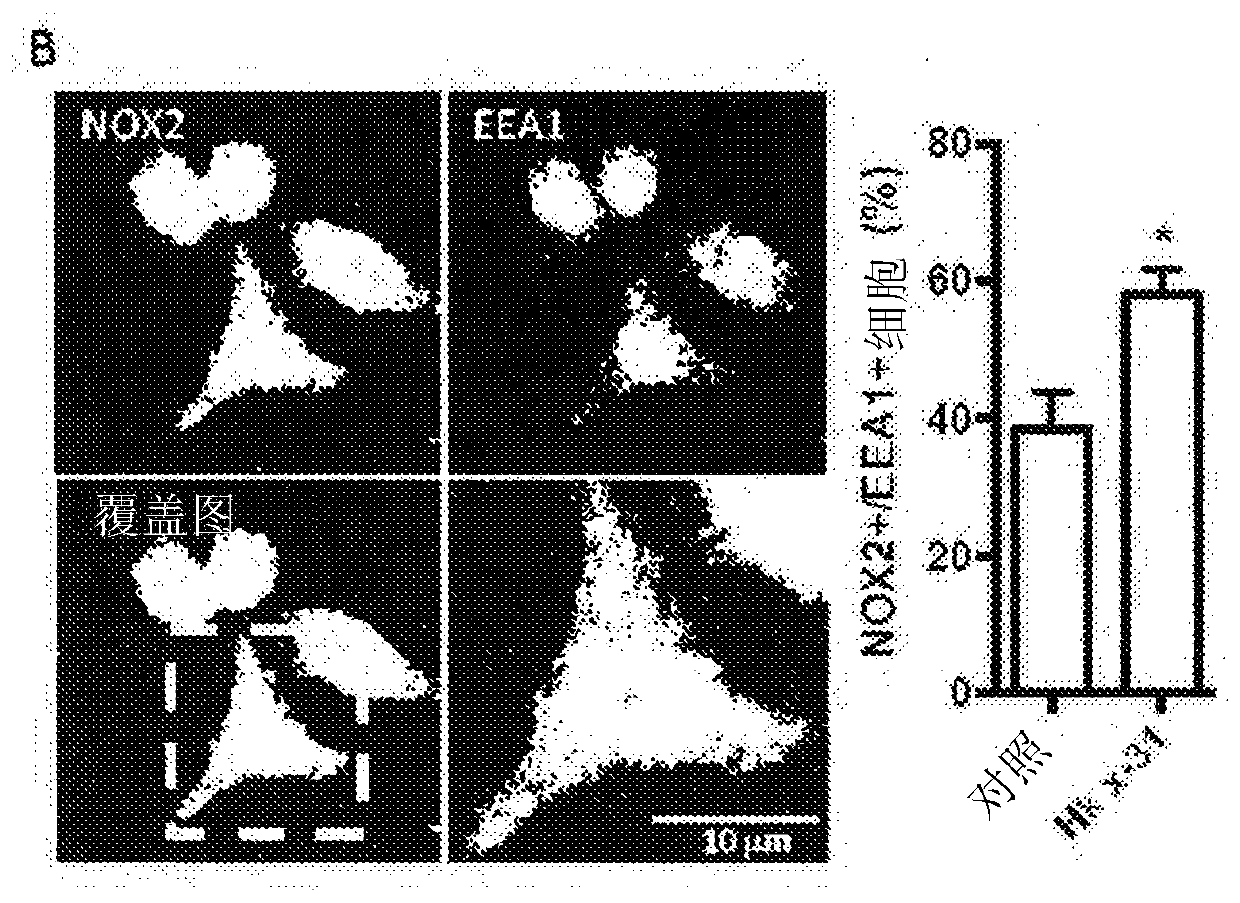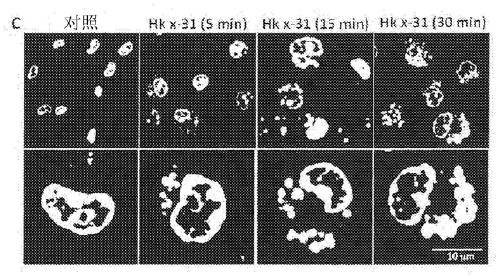Method of treatment
An amino acid and sequence technology, applied in chemical instruments and methods, pharmaceutical formulations, animal/human proteins, etc., can solve problems such as antibody elevation and ability deficiency
- Summary
- Abstract
- Description
- Claims
- Application Information
AI Technical Summary
Problems solved by technology
Method used
Image
Examples
Embodiment 1
[0192] Influenza virus drives endosomal ROS
[0193] To address the potential role of endosomal ROS production in viral pathology, influenza A viruses, which belong to group IV anti-strand ssRNA viruses of the Orthomyxoviridae family and are internalized by endocytosis, were first considered. Dose and time of exposure of mouse alveolar macrophages (AM), mouse peritoneal RAW264.7 cells, or bone marrow-derived macrophages (BMDM) to influenza A virus strain HKx31(H3N2) resulting in influenza nucleoprotein (NP) fluorescence The dependent increase, which was nearly abolished by the potent dynamin inhibitor, Dynasore (100M), suggests a clathrin-coated pit or caveolin-dependent internalization mechanism. Internalizing viruses showed strong co-localization with the early endosomal marker EEA1 (Fig. 1a). However, not all NPs co-localized with EEA1, suggesting that influenza A virus is not only present in early endosomes (Fig. 1a), but may have entered late endosomes and / or lysosomes. ...
Embodiment 2
[0195] Endosomal TLR7-NOX2 signaling axis
[0196] RNA viruses are endosomally TLR7 (for ssRNA viruses) [Lund et al. (2004) Proceedings of the National Academy of Sciences of the United States of America 101 (15): 5598-5603, Diebold et al. Science 303 (5663): 1529- 1531] and TLR3 (dsRNA virus), and the cytoplasmic sensor retinoic acid-inducible gene I (RIG-1) (which can detect viral RNA with a 5' triphosphate (Lund et al. (2004) supra) and NOD-like receptors NLRs [Iwasaki and Pillai (2014) supra; Ichinohe et al. (2009) The Journal of Experimental Medicine 206(1):79-87; Allen et al. (2009) Immunity 30(4):556-565]. It is hypothesized that influenza A enters acidified endosomes, leading to the release of viral RNA, the activation of TLR7, and the stimulation of NOX2 oxidase-dependent ROS production. Consistent with this suggestion, TLR7 associates with influenza A (Fig. 2a), NOX2 (Fig. 2b) co-localizes with EEA1 (Fig. 2c), from TLR7 - / - Primary AMs of mice and TLR7- and MyD88-d...
Embodiment 3
[0199] Strain independence of endosomal ROS
[0200] Macrophages exposed to rhinovirus (picornaviridae, group IV), respiratory syncytial virus (paramyxoviridae, group V), human parainfluenza virus (paramyxoviridae, V group), human metapneumovirus (paramyxoviridae, group V), Sendai virus (paramyxoviridae, group V), dengue virus (flavoviridae, group IV) or HIV (retroviridae, group VI, ssRNA-RT viruses) lead to a marked increase in endosomal ROS, which is expressed in TLR7 - / - significantly suppressed in macrophages, but not in TLR9 - / - cells were not affected (Figure 3a and Figure 3b). Neither mumps virus (paramyxoviridae, group V) nor Newcastle disease virus (NDV, paramyxoviridae, group V) produced significant endosomal ROS (Fig. Note that these viruses primarily enter cells through the process of membrane fusion rather than endocytosis. Exposure of macrophages to rotavirus (rhesus strain or bovine UK strain, (reoviridae, group III)) also did not produce endosomal ROS (Fig....
PUM
 Login to View More
Login to View More Abstract
Description
Claims
Application Information
 Login to View More
Login to View More - R&D
- Intellectual Property
- Life Sciences
- Materials
- Tech Scout
- Unparalleled Data Quality
- Higher Quality Content
- 60% Fewer Hallucinations
Browse by: Latest US Patents, China's latest patents, Technical Efficacy Thesaurus, Application Domain, Technology Topic, Popular Technical Reports.
© 2025 PatSnap. All rights reserved.Legal|Privacy policy|Modern Slavery Act Transparency Statement|Sitemap|About US| Contact US: help@patsnap.com



